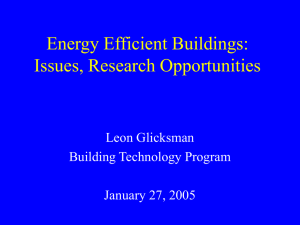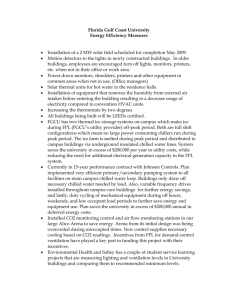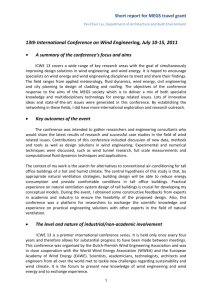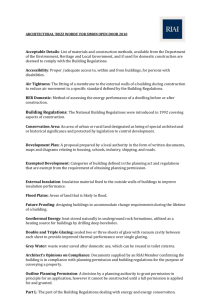IDŐJÁRÁS
advertisement
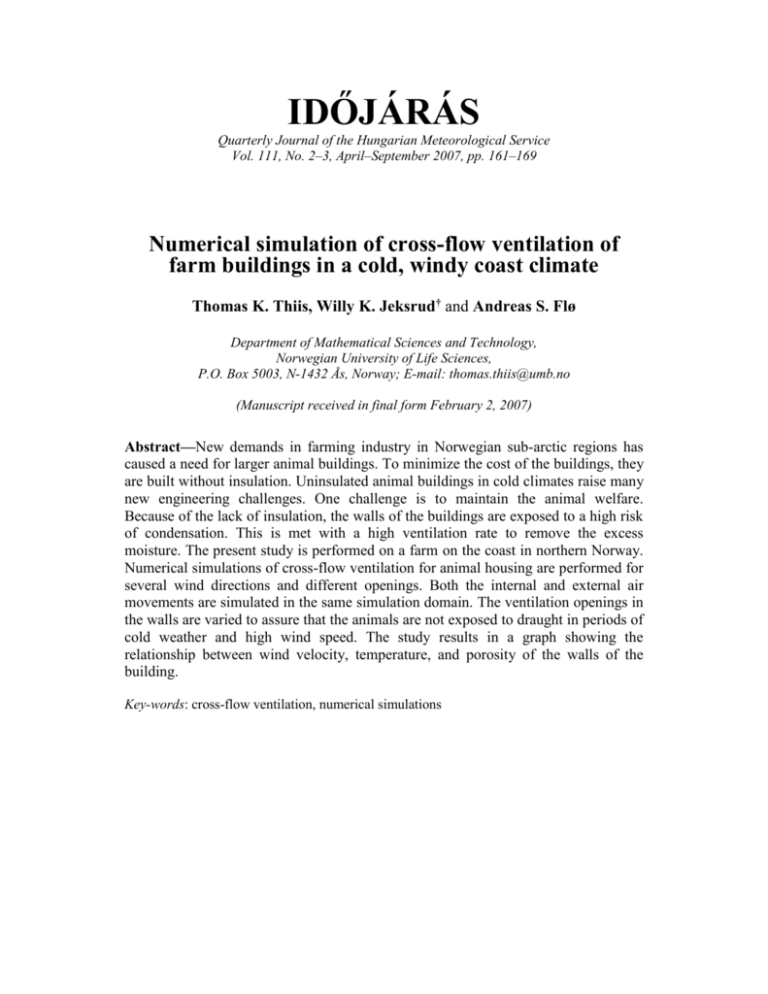
IDŐJÁRÁS Quarterly Journal of the Hungarian Meteorological Service Vol. 111, No. 2–3, April–September 2007, pp. 161–169 Numerical simulation of cross-flow ventilation of farm buildings in a cold, windy coast climate Thomas K. Thiis, Willy K. Jeksrud† and Andreas S. Flø Department of Mathematical Sciences and Technology, Norwegian University of Life Sciences, P.O. Box 5003, N-1432 Ås, Norway; E-mail: thomas.thiis@umb.no (Manuscript received in final form February 2, 2007) Abstract—New demands in farming industry in Norwegian sub-arctic regions has caused a need for larger animal buildings. To minimize the cost of the buildings, they are built without insulation. Uninsulated animal buildings in cold climates raise many new engineering challenges. One challenge is to maintain the animal welfare. Because of the lack of insulation, the walls of the buildings are exposed to a high risk of condensation. This is met with a high ventilation rate to remove the excess moisture. The present study is performed on a farm on the coast in northern Norway. Numerical simulations of cross-flow ventilation for animal housing are performed for several wind directions and different openings. Both the internal and external air movements are simulated in the same simulation domain. The ventilation openings in the walls are varied to assure that the animals are not exposed to draught in periods of cold weather and high wind speed. The study results in a graph showing the relationship between wind velocity, temperature, and porosity of the walls of the building. Key-words: cross-flow ventilation, numerical simulations
